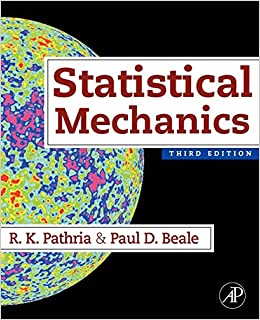The strong interaction exhibits asymptotic freedom at high energies justifying treating the quarks an gluons as noninteracting.
Question:
The strong interaction exhibits asymptotic freedom at high energies justifying treating the quarks an gluons as noninteracting. The effective number of species in equilibrium in these tiny quark-gluon plasmas is accounted for using only the up and down quarks and the gluons. Photons, and leptons, for example, easily escape without interacting with the plasma.
\[
\begin{array}{lll}
u_{u}=2\left(\frac{7}{8} \right) \frac{u_{\gamma}}{2} & u_{\bar{u}}=2\left(\frac{7}{8} \right) \frac{u_{\gamma}}{2} & \text { up quarks and antiquarks } \\
u_{d}=2\left(\frac{7}{8} \right) \frac{u_{\gamma}}{2} & u_{\bar{d}}=2\left(\frac{7}{8} \right) \frac{u_{\gamma}}{2} & \text { down quarks and antiquarks } \\
u_{g}=(8) 2 \frac{u_{\gamma}}{2} & & \text { gluons }
\end{array}
\]
Therefore, the effective number of species is \(g=8+28 / 8=23 / 2\) and \(u_{\mathrm{QGP}}=g u_{\gamma}\). The energy density is \(4 \mathrm{GeV} / \mathrm{fm}^{3}=6.4 \times 10^{35} \mathrm{~J} / \mathrm{m}^{3}\), so
\[
k T \simeq\left(\frac{15(\hbar c)^{3}}{g \pi^{2}}\left[4 \frac{\mathrm{GeV}}{\mathrm{fm}^{3}} \right] \right)^{1 / 4} \simeq 4 \times 10^{-11} \mathrm{~J} \simeq 250 \mathrm{MeV}
\]
and \(T \simeq 3 \times 10^{12} \mathrm{~K}\). This is the record hottest temperature for matter created in the laboratory.
Step by Step Answer:






